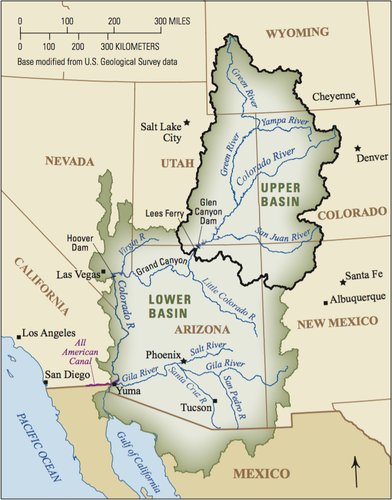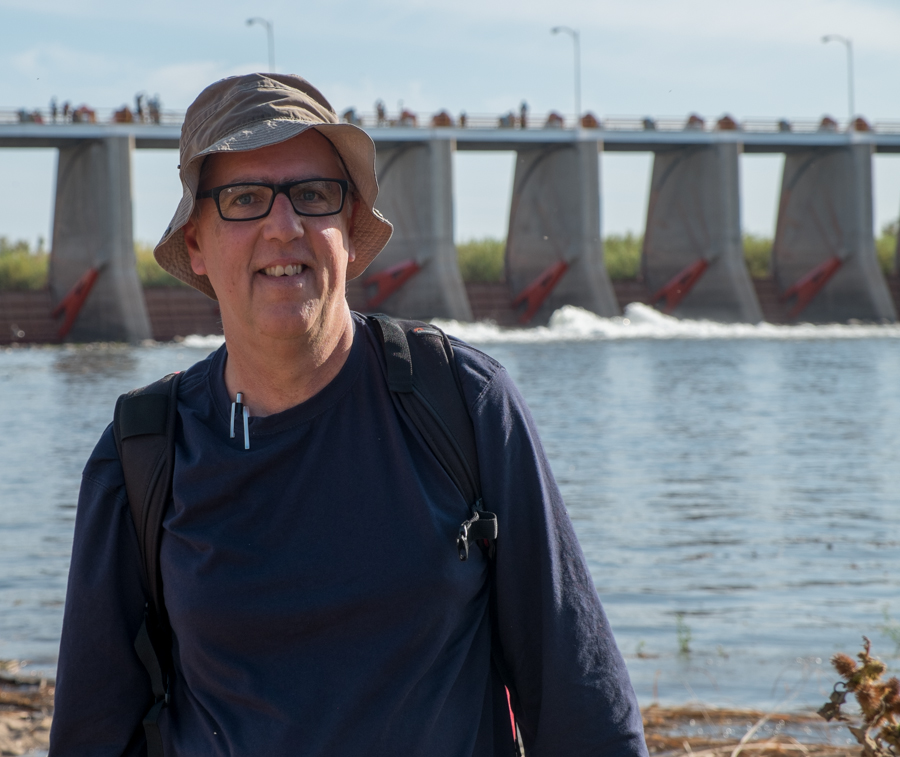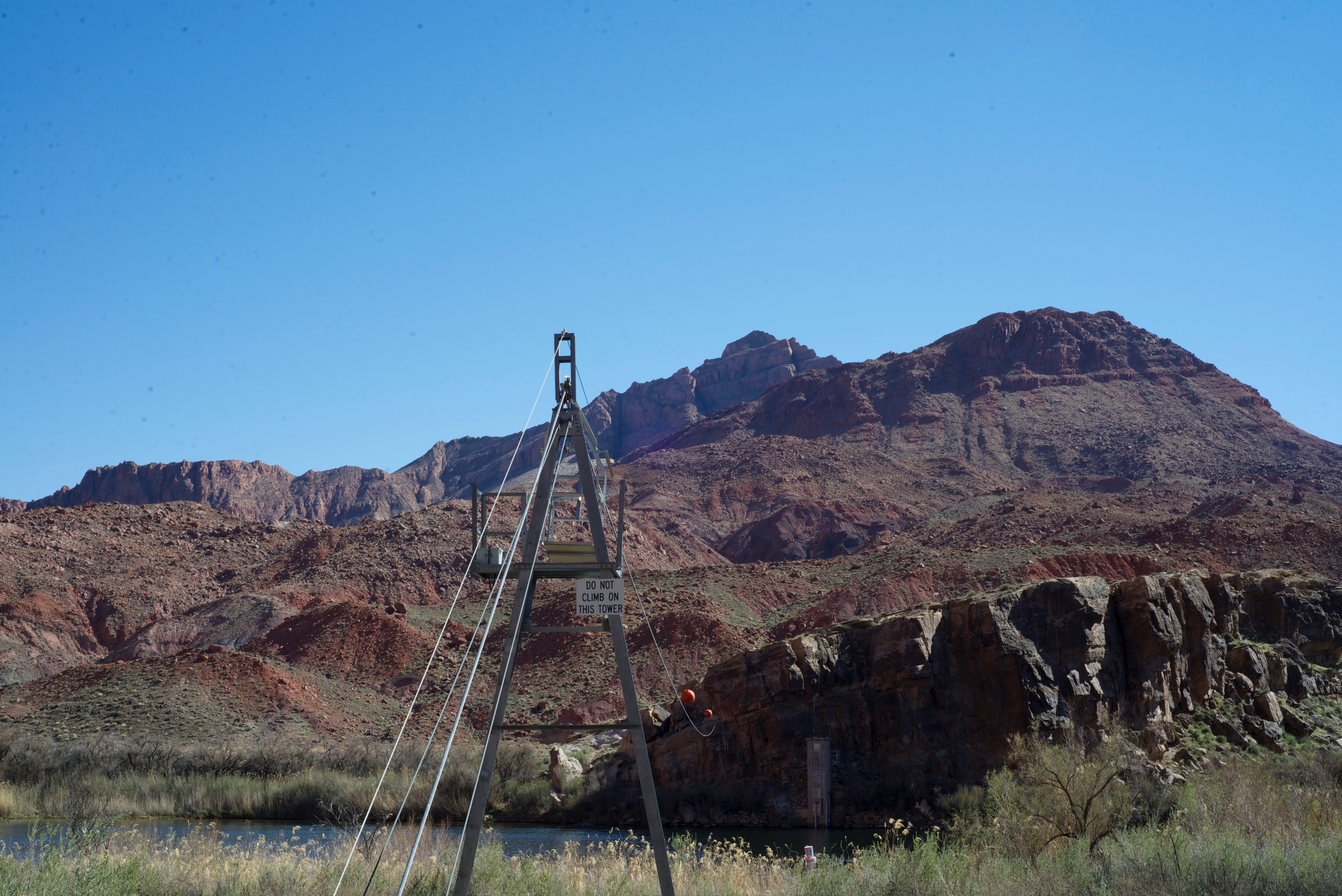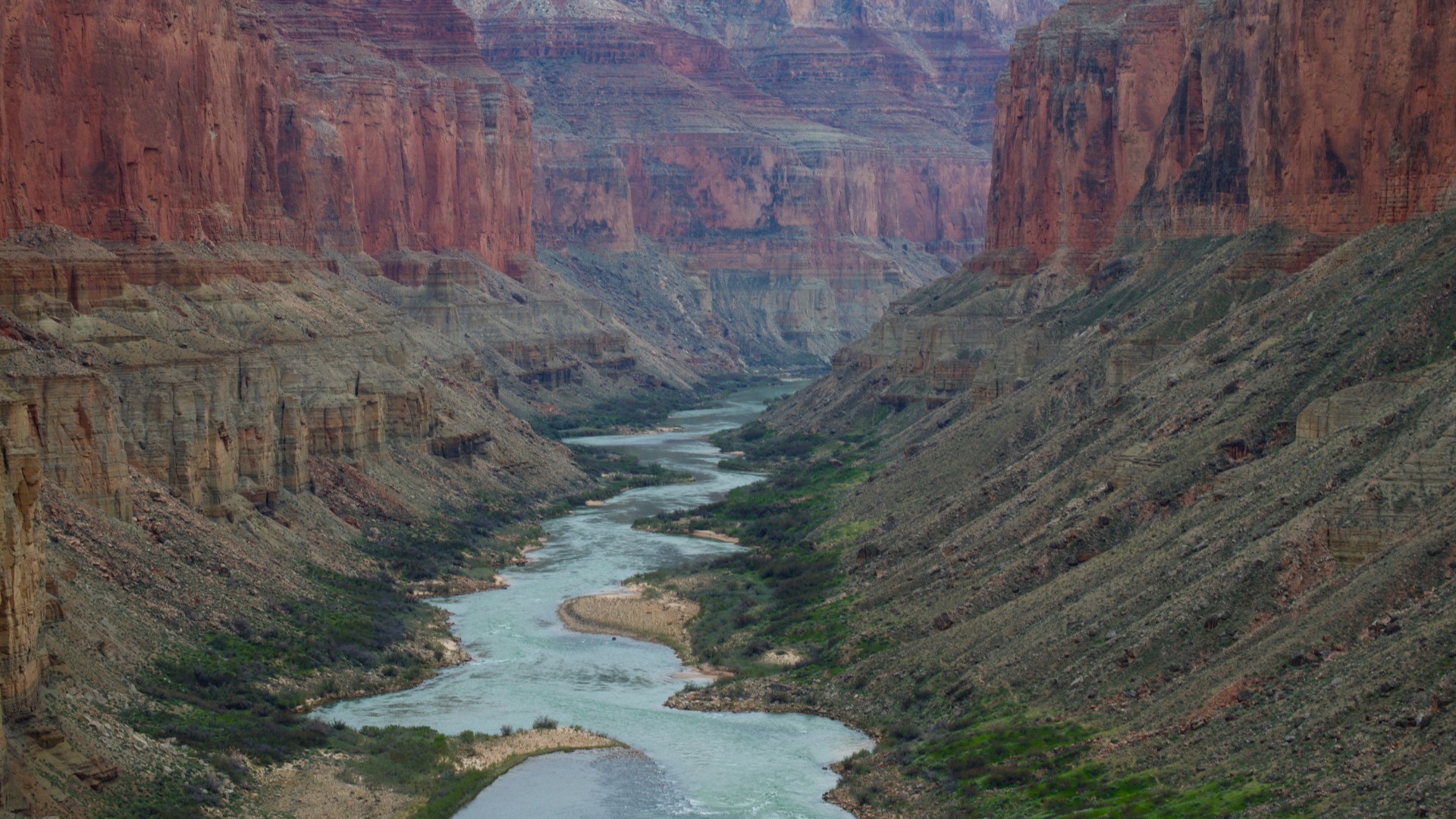It’s been a big year for the Colorado River — and one that may set the stage for decades to come.
For years it’s been apparent that the Colorado, which supplies water to 40 million people in the West — including major cities such as Los Angeles, Las Vegas, Phoenix and Denver — is in “structural deficit.” There’s more demand for water than the river can provide.
Rights to the river’s water were first divvied up in the 1922 compact between seven states, separated into the upper basin of Utah, Wyoming, Colorado and New Mexico, and the lower basin of Nevada, Arizona and California. A share for Mexico was also established decades later. Starting the early 2000s, water levels in Lake Mead and Lake Powell dropped sharply following years of prolonged drought. They’ve never fully recovered.
The states started thinking about how to manage the river during times of shortage. After much negotiation, Congress approved a Drought Contingency Plan which President Trump signed in April. One of the key components of the plan involves how the lower basin states will share voluntary water cuts to prevent Lake Mead from slipping too low and triggering even more severe cutbacks.

The agreement is a testament to the fact that water can be an area of compromise and not just conflict, but the hard work isn’t done. The plan essentially just buys some time until the next big challenge. Beginning in 2020, the states will return to the negotiating table where they’ll have until the end of 2026 to come up with a new long-term plan for managing the Colorado River given the current hydrologic realities of climate change and overallocation.
Those realities pose a significant threat to the region: Scientists Brad Udall and Jonathan Overpeck recently found that warming temperatures have already had a hand in reducing the Colorado River. Their research showed that flows could be curtailed by 20 percent or more below the 20th-century average by 2050 and 40 percent by 2100.
States will need to find a way to live with less water, but how those cuts will be distributed and how deep they’ll go will be the next area of contention. As the stage is being set for this showdown, we talked to Colorado River expert John Fleck, director of the water resources program at the University of New Mexico and author of the book Water is for Fighting Over: and Other Myths about Water in the West.
How significant was the agreement reached with Drought Contingency Plan?
The actual accomplishment of the plan, which is an agreement among water users to voluntarily reduce their use in the lower basin, is amazing — especially Arizona agreeing to some really deep cuts. One could wish perhaps that California had agreed to give up more, but California had no legal obligation to cut its water and is now in [the agreement].
If the upper basin meets its delivery obligations under the compact to deliver seven and a half million acre-feet a year [approximately 2.44 trillion gallons] plus half its share of the Mexican treaty obligation, then we stabilize Lake Mead. It will drop to some uncomfortably low levels, but then it will stabilize.
That also comes with some big caveats. It presumes the upper basin meets its obligations and we aren’t on the pessimistic side of the hydrology that researchers like Brad Udall and Jonathan Overpeck have modeled.
The problem isn’t solved, but we’ve just taken a really big step toward solving it.
What do you think was learned from this round of negotiations?
We learned how hard it was and how long it took. Back in 2015, when I was finishing up my last book, this seemed like the simple, obvious thing that they had to do. Why did it take so long? Why was it so hard? And the answers to that are really complicated. But that’s part of the learning that went on.

You have people within the Colorado River management community — the seven states, the big water agencies, all the major players in the environmental groups — and they all understand big cutbacks are needed. But then it is much harder to sell that idea to water agencies back home who hang on to previous rules about how much water they’re supposed to get.
The interface between working at the basin scale and the politics back home is a really hard spot. With the Drought Contingency Plan, this manifested both in the agricultural fight in Arizona with Pinal County farmers and in what finally played out on the Salton Sea in California’s Imperial Valley. It’s a sort of a rejuvenation of the rural–urban conflict. And that will be a critical challenge in figuring out how to do the next steps, which involves using less water.
In 2020 the states will embark on talks to finally replace interim guidelines on river management that were written in 2007. This is a huge deal. What are some of the biggest challenges for the next round of negotiations?
One of the biggest difficulties is figuring out who gets to participate — who’s in the room when these deals are negotiated. And it’s just not at all clear what the process is going to look like for renegotiating guidelines.
We’ve clearly reached a point where we need to expand the notion of who gets to be a stakeholder. There’s this sort of rigid hierarchy where states get to be at the table and states then get to sometimes be represented by — or inclusive of — their big water users. But who is the person at the table representing air quality and poor people in Imperial Valley? Or who gets to be at the table representing tribes, especially tribes that have a lot of water rights, have a lot of legal and moral entitlement, but don’t have a lot of financial capacity for participation?
I don’t know the answer to this, but this is something I’ve been thinking about a lot. We don’t really know what the process is going to look like.
In Science Be Dammed: How Ignoring Inconvenient Science Drained the Colorado River, your forthcoming book with Eric Kuhn, you write about how political expediency has come before scientific integrity in Colorado River management. For nearly a century, your research found, science was selectively used by people who wanted a rosier view of how much water was in the river. Do you think those making the decisions this time around are starting from an agreed-upon scientific framework of how much water we have and how climate change could impact that?
I am optimistic that we’re making progress on that, but I’m not sure. Confirmation bias naturally leads people to want to find a set of numbers that supports the thing they really want to do. That’s just human nature.

The other issue of concern is holding on to the idea of one number — of wanting to know what the flow of the Colorado River is going to be, rather than planning for different scenarios.
I’m heartened to see a shift toward this scenario analysis instead of the focus on just trying to make a better climate model to give us that one number, because climate models can’t do that for us. Let’s instead focus on “what if” scenarios for a range of possibilities and be ready for each.
What should we be looking for during this next negotiation process?
There are a bunch of unresolved legal questions from the 1922 compact, so whatever happens has to happen in the context of those questions being addressed. Without a compromise any one of them could end up in the Supreme Court with uncertain outcomes and really bad problems for whoever loses.
Behind the scenes each side has their lawyers ready to argue why they should not be the ones who take the hit in water allocations. But somebody is going to take a hit unless we compromise somehow.
That’s the big thing, but then there are other issues that need to be considered like the value of environmental flows and the recognized integrity of indigenous communities and their rights around both quantity of water but also healthy flows of rivers. So how do you then incorporate all that stuff? Those are the interesting questions to watch.
![]()



1 thought on “The Colorado River’s Biggest Challenge Looms”
Comments are closed.